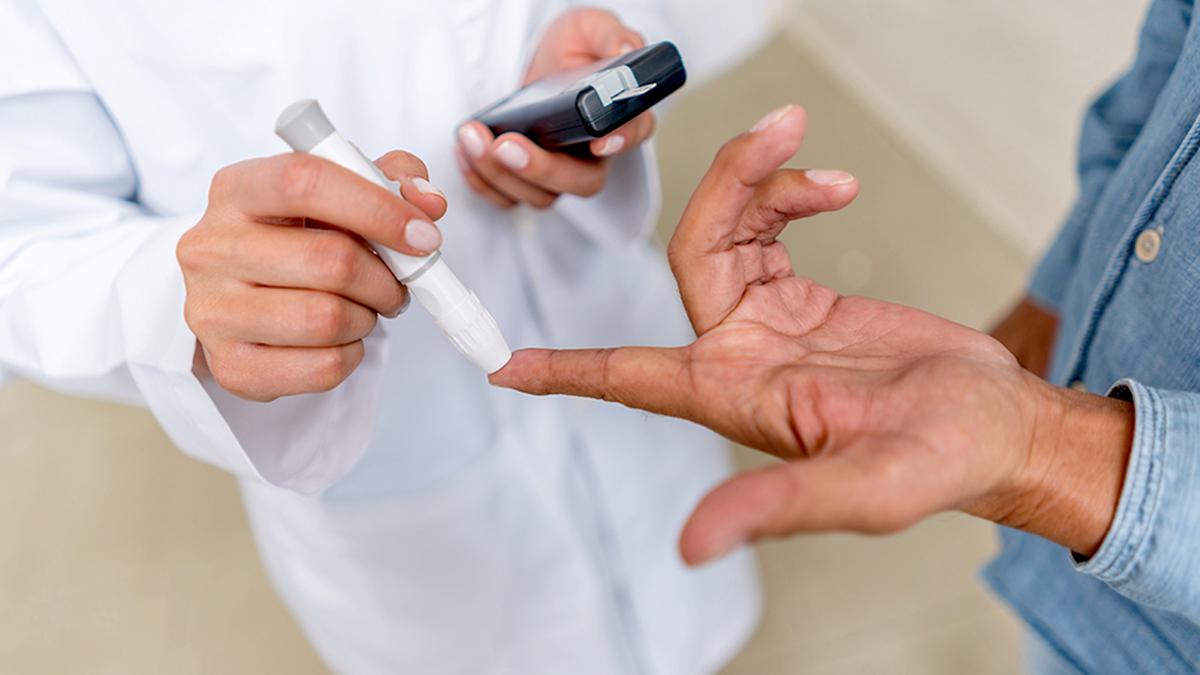
Insulin’s new upgrade: Can it truly prevent blood sugar lows? Premium
The Hindu
Revolutionary glucose-responsive insulin NNC2215 offers hope for diabetics, managing blood sugar levels without hypoglycemia risks.
Diabetes has evolved over time into a chronic health condition faced by billions of individuals around the world. While Type 2 diabetes is more common and prevalent, it is the treatment of Type 1 diabetes that is relatively more challenging.
For years, the treatment of type 1 diabetes was dependent on an insulin regimen -- injections. Insulin therapy manages blood glucose levels very well, but could put the person at risk of hypoglycaemic episodes. A hypoglycemic episode occurs when a person’s blood sugar drops very low, causing varying effects ranging from slight dizziness and confusion to seizures and coma, with loss of consciousness.
However, finally there is hope on the horizon for those dependent on insulin and those who are prone to hypoglycaemia, thanks to the development of a smart version of insulin that will reportedly adjust itself as per the body’s requirement of glucose.
In mid-October, Thomas Hoeg-Jensen et al wrote in Nature that preclinical studies of an insulin candidate named NNC2215 have shown promise. With this glucose-responsive insulin, it is likely that diabetics may not experience dangerously low blood sugar levels.
After breaking down the sugar and carbohydrates in meals, the body turns them into glucose, a unique type of sugar. This glucose serves as the body’s fuel. Excess blood glucose is transformed into glycogen, which serves as a store of energy. The pancreatic hormone insulin is necessary for this procedure. Whenever we eat, our blood glucose level experiences a spike, triggering insulin secretion. This promotes metabolism and storage of glucose in fat and muscles, thereby helping to lower blood glucose to normal levels, which stops further insulin release. Now, what if the pancreas are unable to produce insulin? This causes a condition called hyperglycaemia (high blood glucose) and an individual with this condition is said to be diabetic. Uncontrolled diabetes can cause long term effects like blindness, kidney failure and nerve damage.
The risk of these complications can be reduced by controlling blood sugar levels. Injecting insulin as recommended by a doctor, along with a strict diet and regular exercise is the traditional method of blood sugar control that has been applied for decades, but this approach comes with the risk of hypoglycemia, a condition where the blood glucose level drops below normal levels of 70 mg/dL. This raises concerns, because it brings the immediate risks of cardiac arrythmia, loss of consciousness, coma or even death.
When insulin is injected beneath the skin, it is slowly absorbed and takes a long time to enter into blood circulation, whereas insulin released by the pancreas is metabolised in minutes and is then quickly eliminated from the bloodstream. Once in the bloodstream, injected insulin can stay active for up to 40 hours and lower blood glucose levels to dangerously low levels. Many diabetics choose conservative insulin dosages to prevent hypoglycaemic episodes, which can be fatal, particularly if they occur at night. However, the risk of consequences from long-term hyperglycaemia (high blood sugar levels) is increased when the insulin dosage is compromised out of concern about hypoglycaemia (low blood sugar levels), and may lead to suboptimal glucose control.











